Abstract
1. Voltage-clamp experiments on frog atrial muscle were designed to distinguish effects due to K accumulation in extracellular spaces from those due to activation of K conductance mechanisms in the membrane. 2. The set of instantaneous current-voltage relations obtained at various external K concentrations following depolarization to about -10 mV for several seconds was found to be quite different from that obtained before the depolarization. Hence the process of increasing the extracellular K concentration cannot account for all the time-dependent changes in outward current during depolarization. 3. Although the instantaneous current-voltage relations obtained at different values of external K concentration before prolonged depolarization show the cross-over phenomenon (Noble, 1965), those obtained at the end of the depolarization did not show this feature. It is concluded that the current-voltage relations for the channels conducting the time-dependent K current do not show cross-over. 4. These results were used to construct a model involving both K activation and K accumulation. This model successfully reproduces the appearance of a very slow component in outward current decay tails which, when subtracted by semi-exponential curve-stripping leaves a component with the real time constant of conductance change. The model does not however reproduce the appearance of a fast decaying component without adding a second conductance mechanism, or assuming non-exponential decay of a single conductance mechanism. 5. It is therefore suggested that i chi, fast is not a perturbation of i chi, slow or of iK1 by the process of K accumulation. This conclusion is reinforced by the results of experiments showing that the relative magnitude of i chi, fast is not greatly changed by substantially increasing the external K concentration in order to reduce the proportionate effect of K accumulation on the K concentration.
Full text
PDF
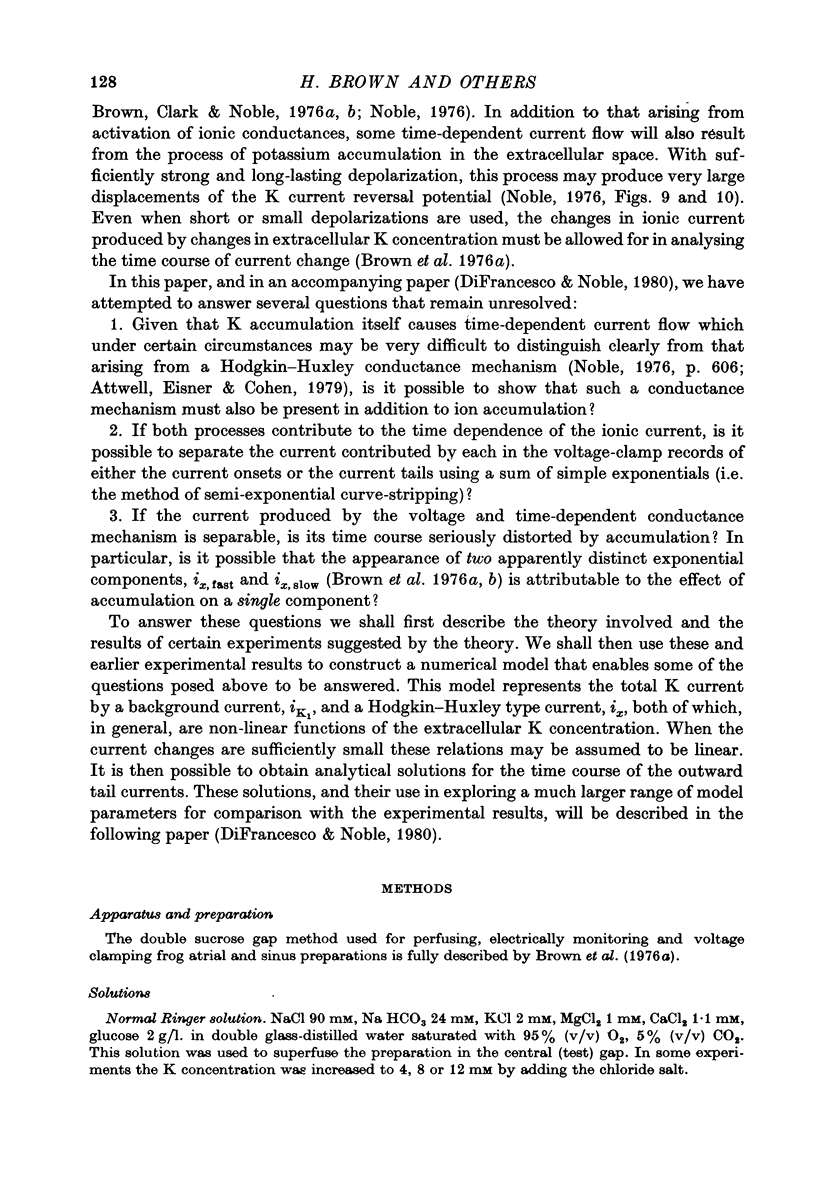


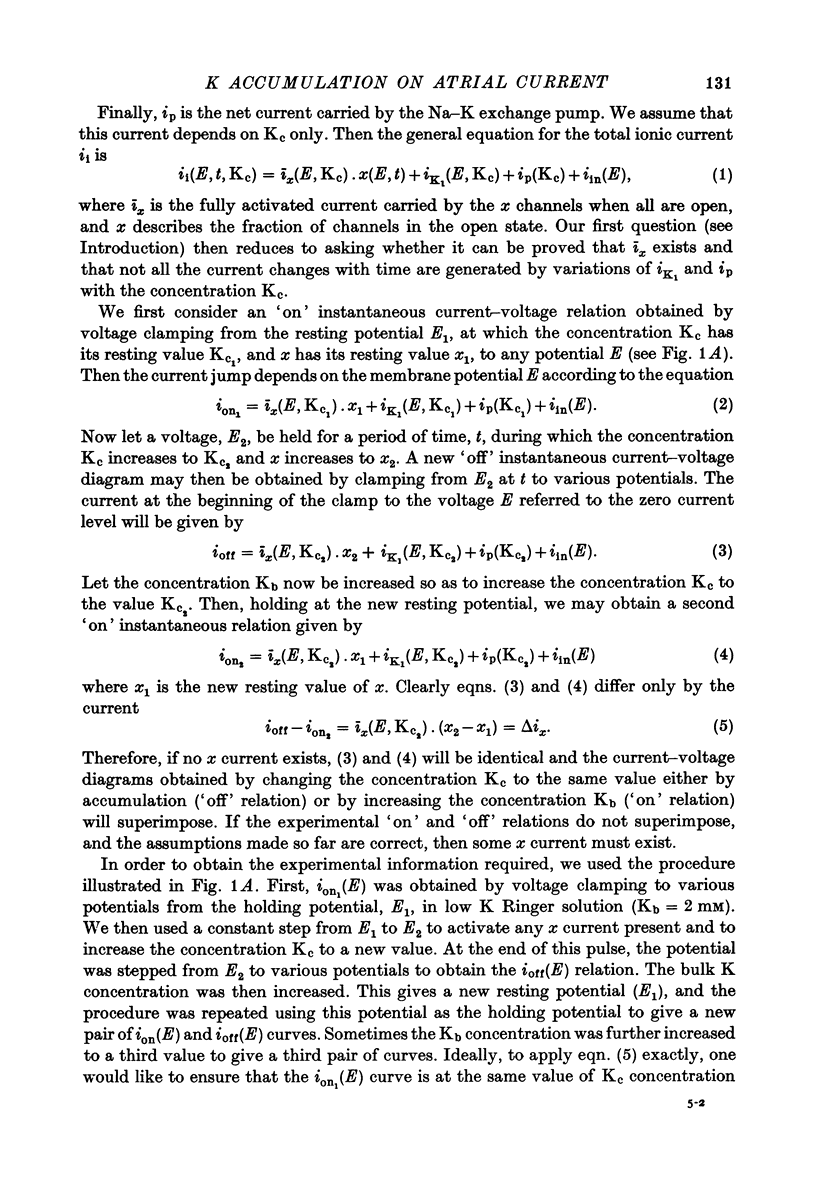

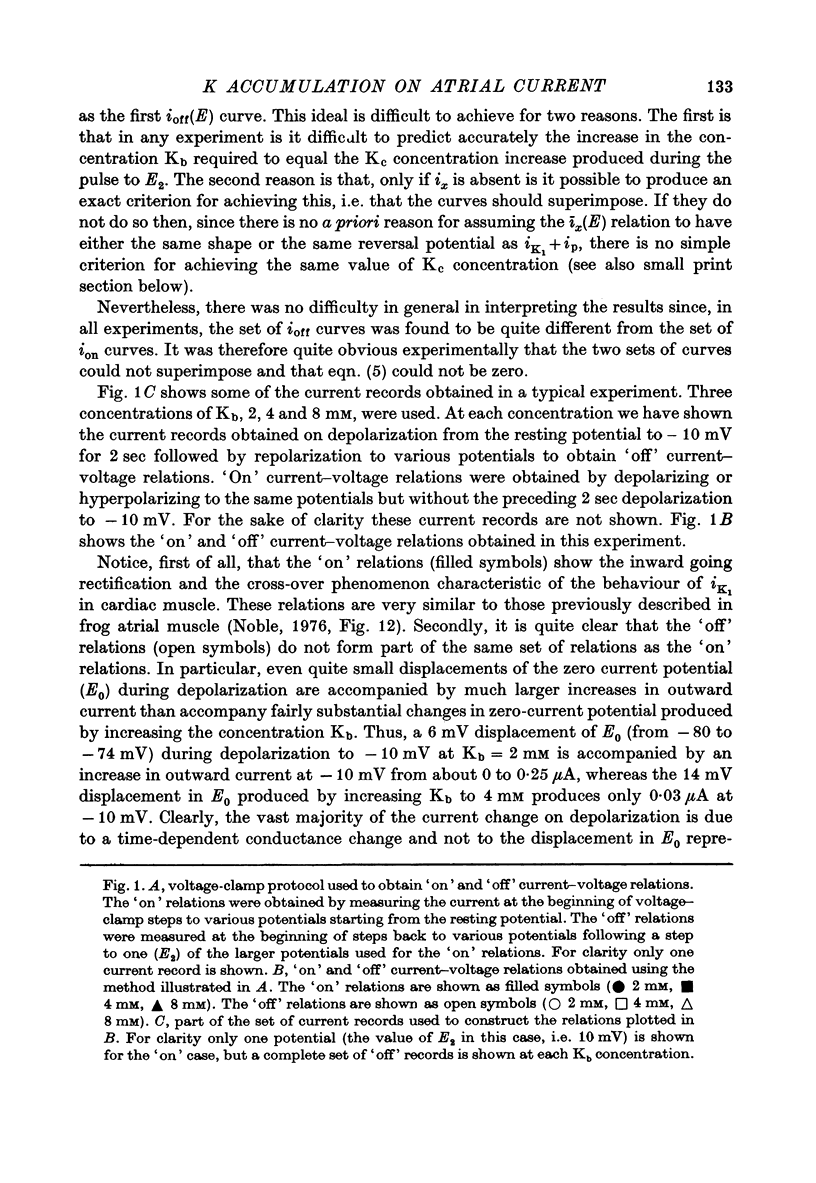
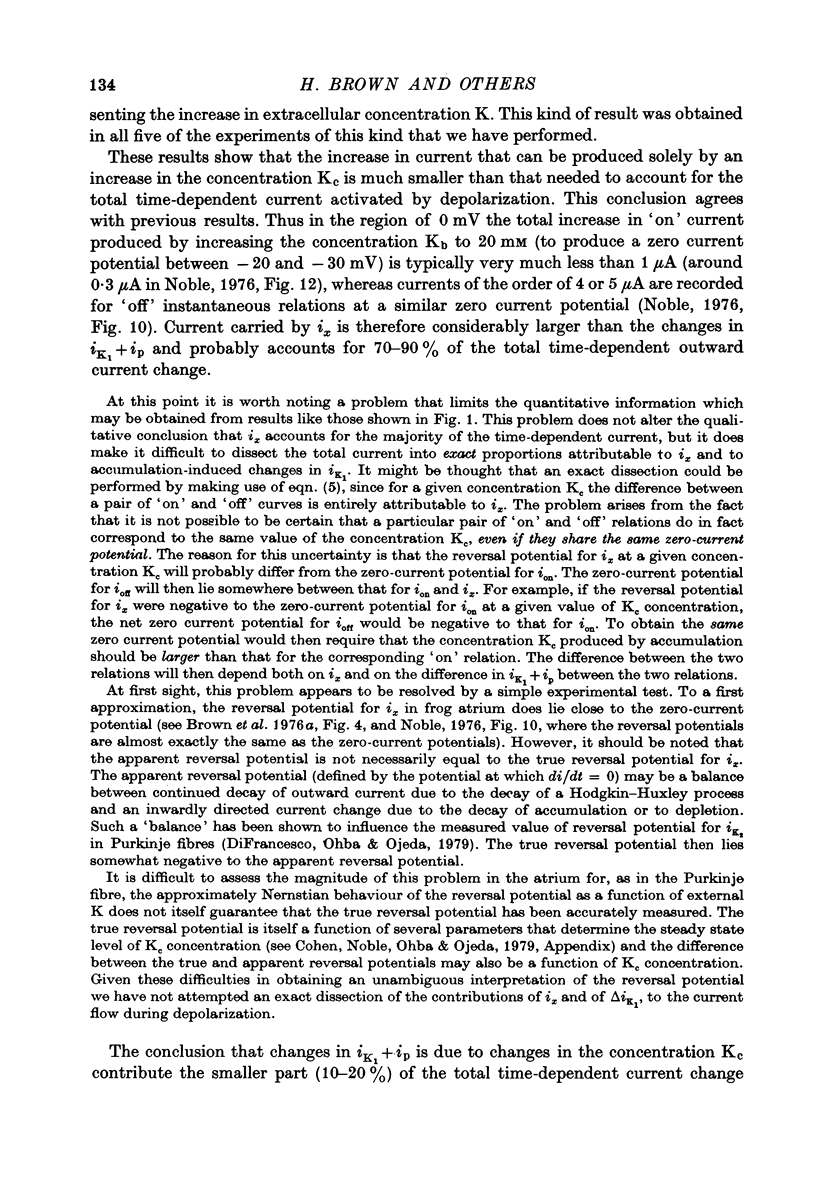
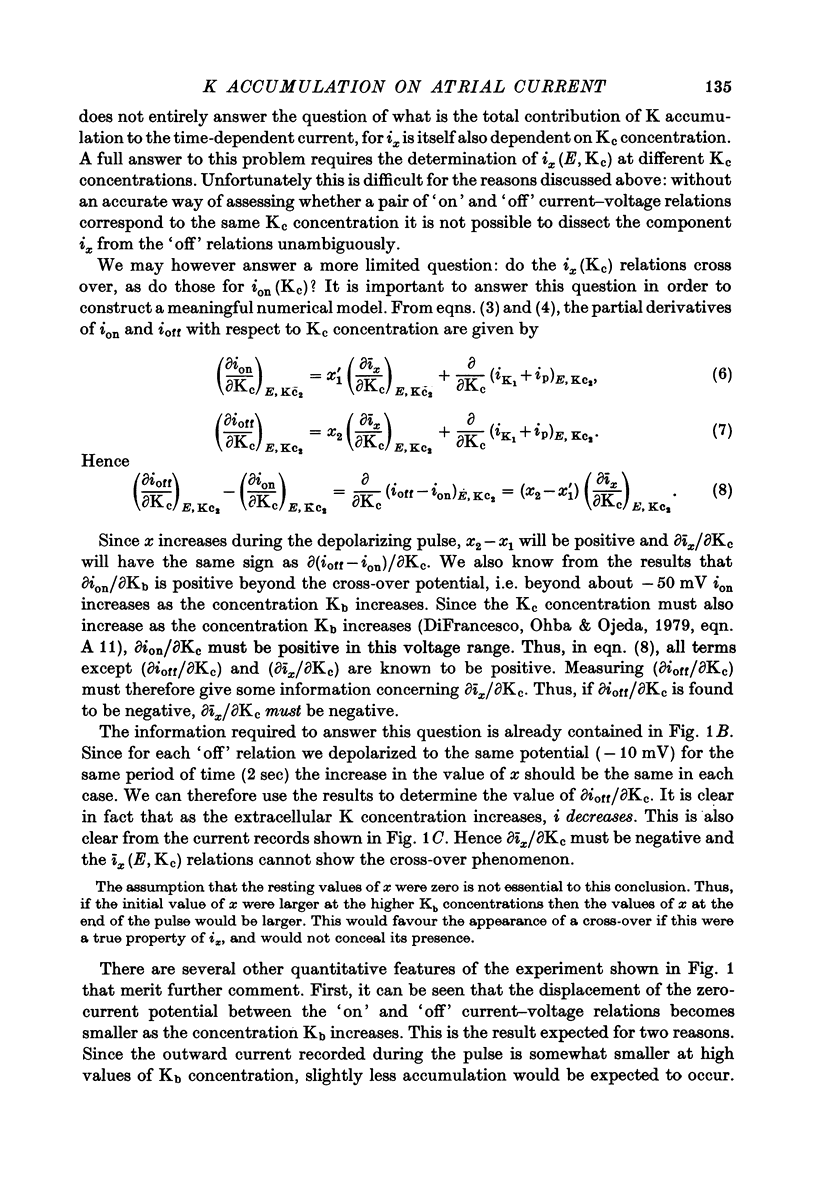
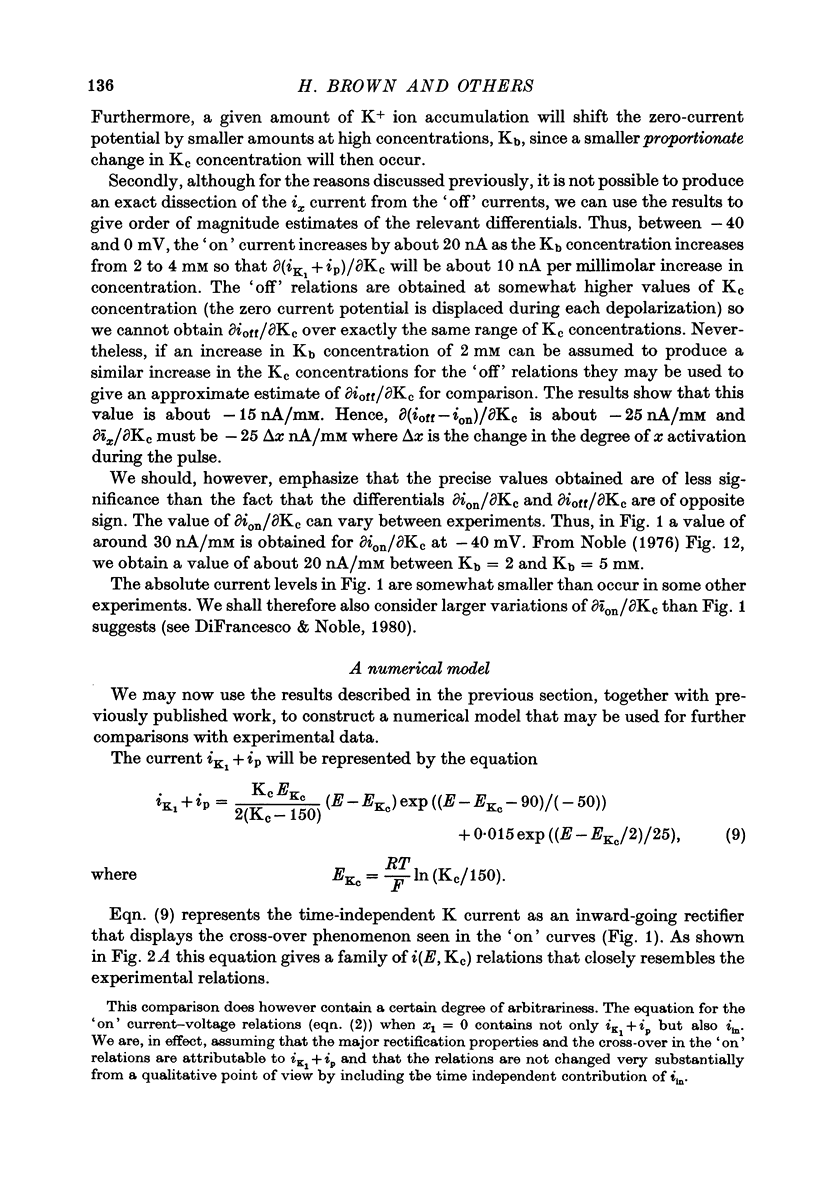

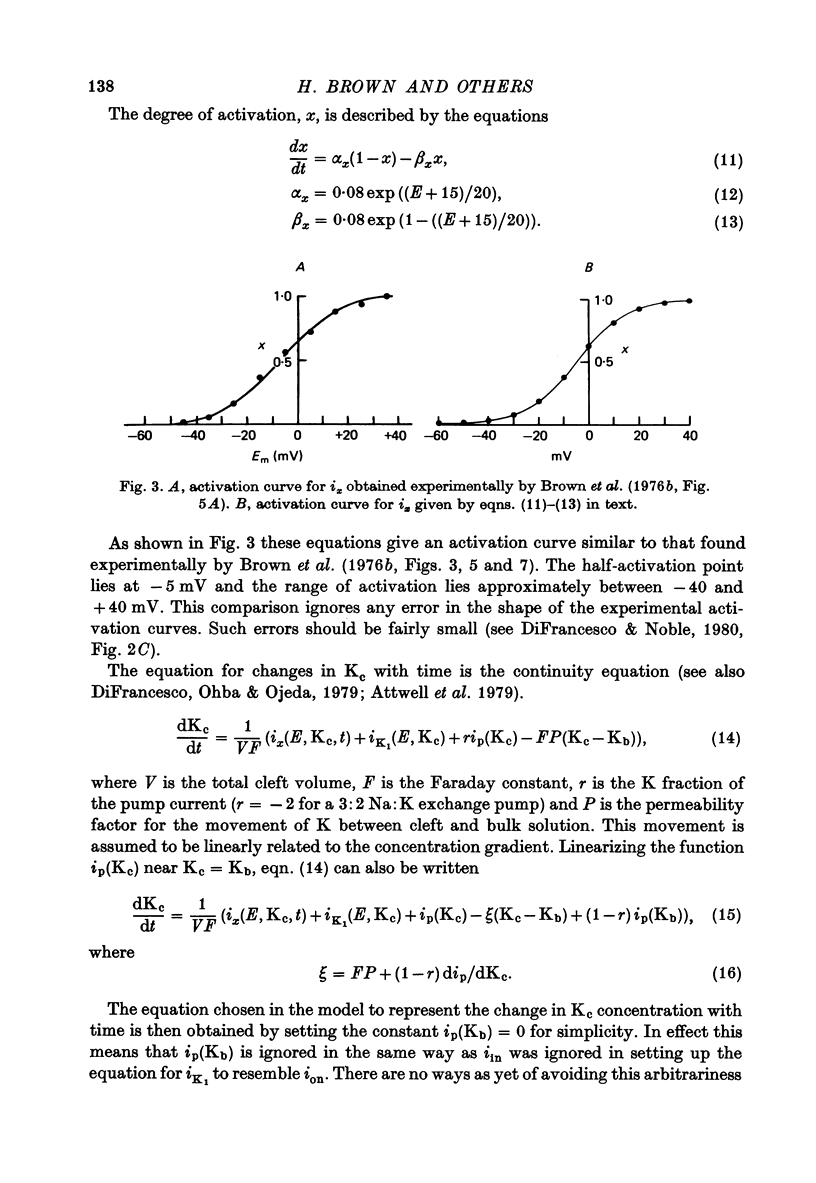
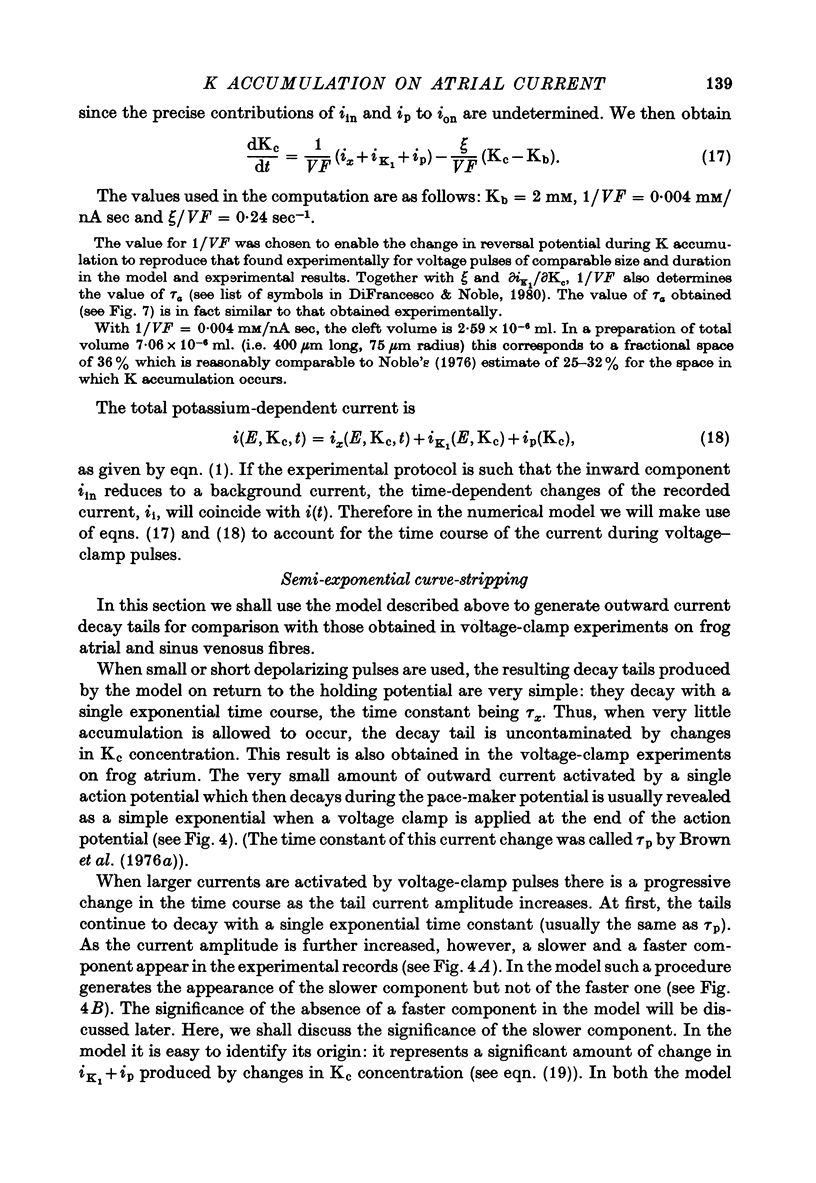

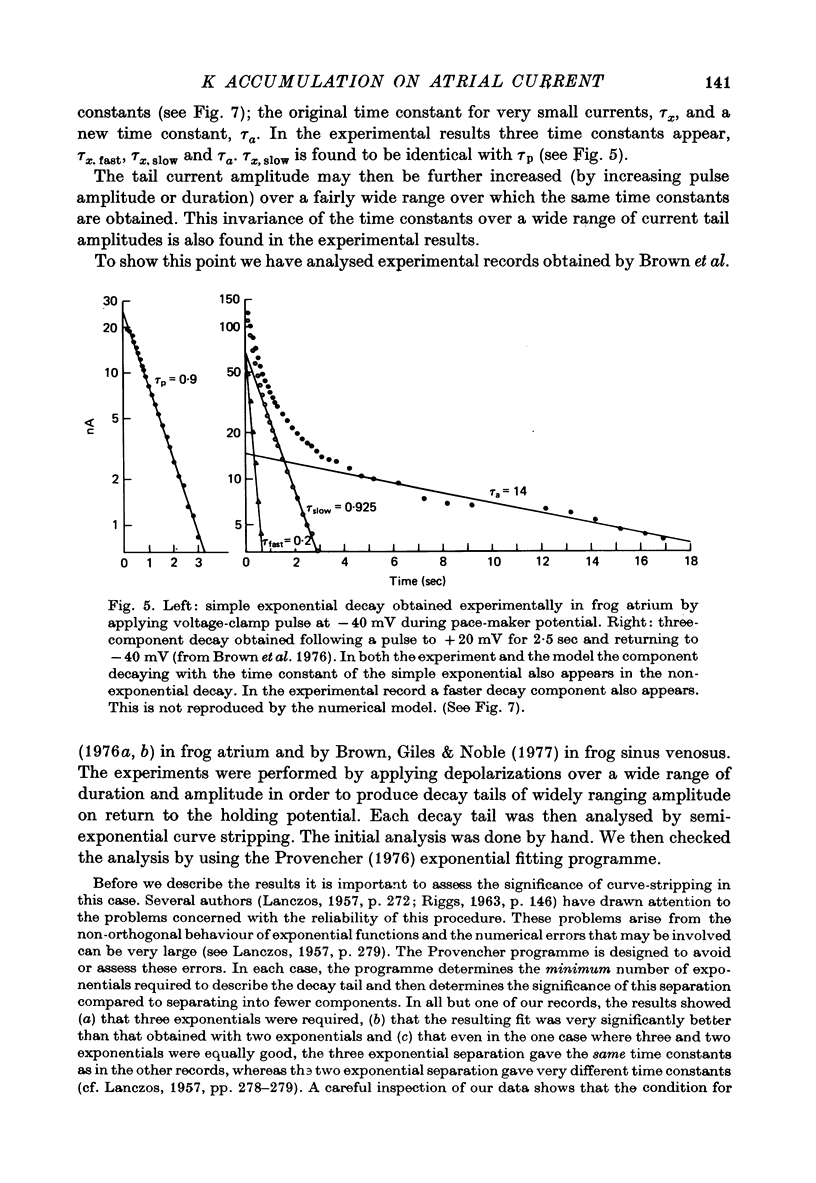
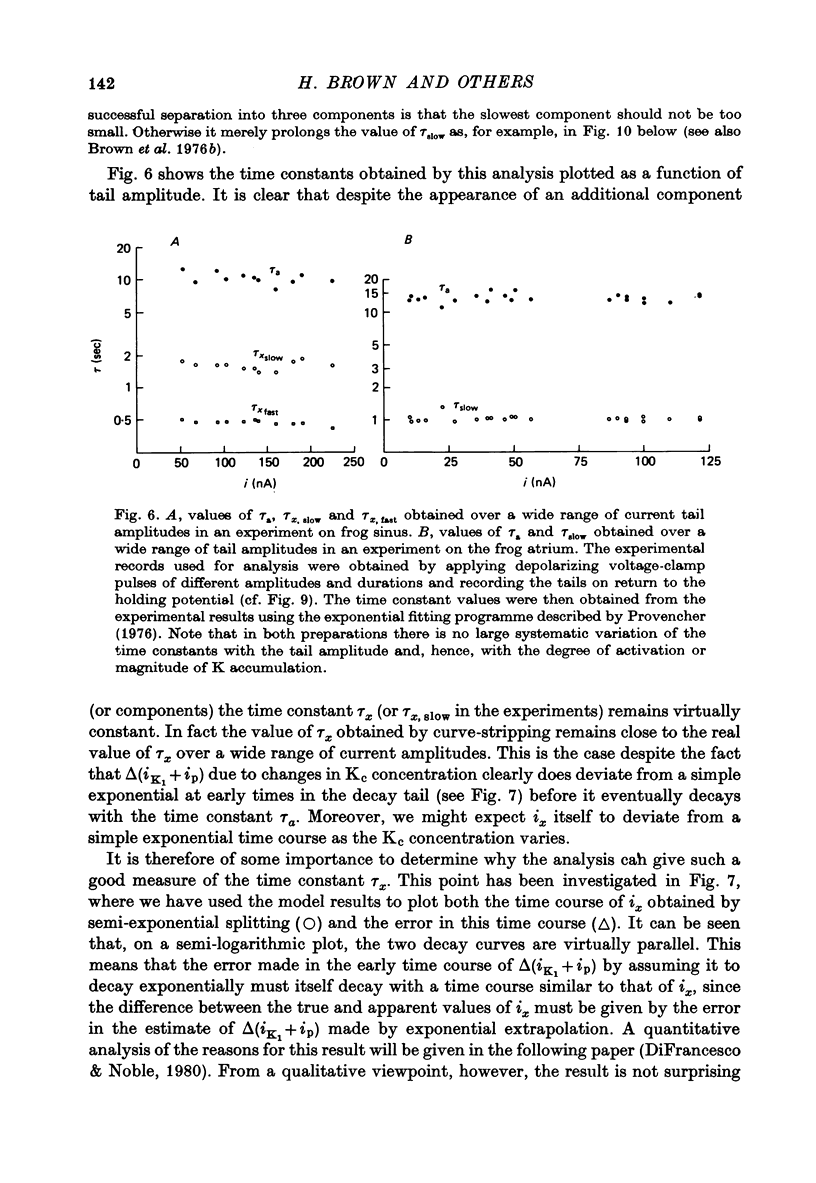


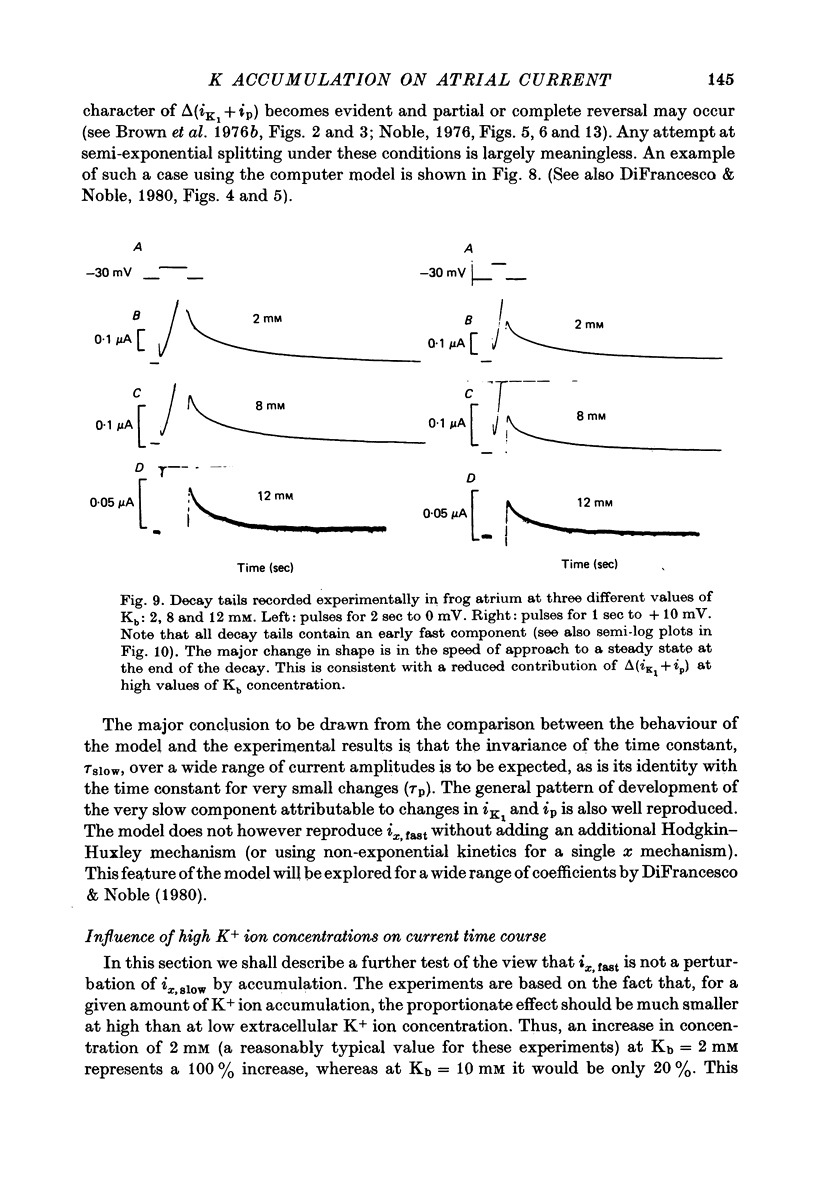

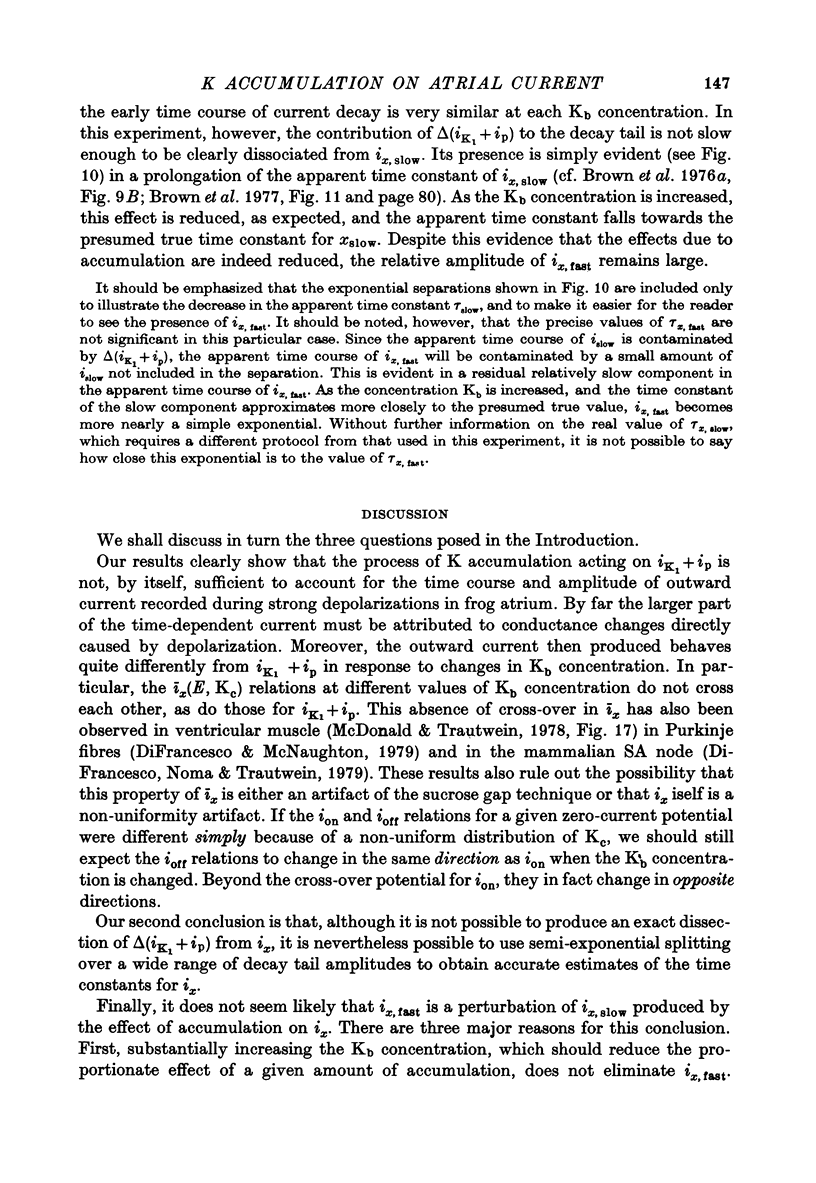
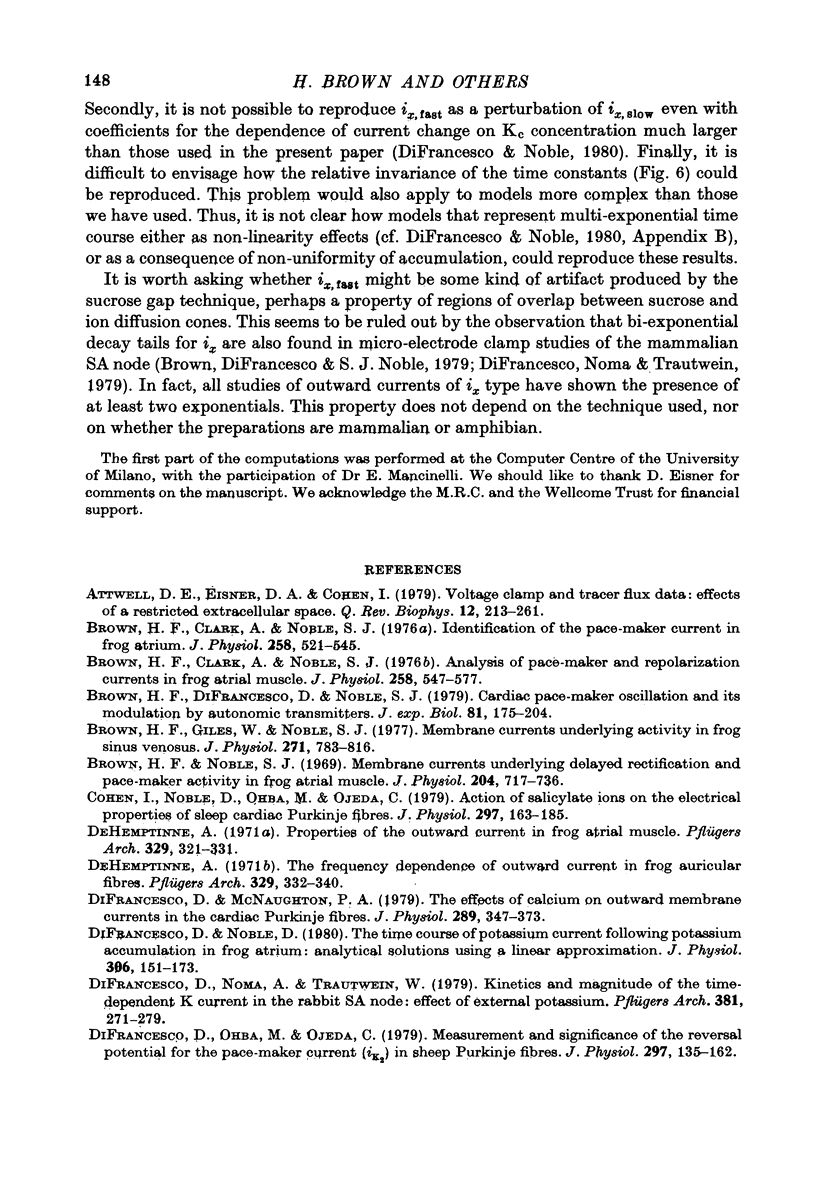

Selected References
These references are in PubMed. This may not be the complete list of references from this article.
- Attwell D., Eisner D., Cohen I. Voltage clamp and tracer flux data: effects of a restricted extra-cellular space. Q Rev Biophys. 1979 Aug;12(3):213–261. doi: 10.1017/s0033583500005448. [DOI] [PubMed] [Google Scholar]
- Brown H. F., Clark A., Noble S. J. Analysis of pace-maker and repolarization currents in frog atrial muscle. J Physiol. 1976 Jul;258(3):547–577. doi: 10.1113/jphysiol.1976.sp011435. [DOI] [PMC free article] [PubMed] [Google Scholar]
- Brown H. F., Clark A., Noble S. J. Identification of the pace-maker current in frog atrium. J Physiol. 1976 Jul;258(3):521–545. doi: 10.1113/jphysiol.1976.sp011434. [DOI] [PMC free article] [PubMed] [Google Scholar]
- Brown H. F., Giles W., Noble S. J. Membrane currents underlying activity in frog sinus venosus. J Physiol. 1977 Oct;271(3):783–816. doi: 10.1113/jphysiol.1977.sp012026. [DOI] [PMC free article] [PubMed] [Google Scholar]
- Brown H. F., Noble S. J. Membrane currents underlying delayed rectification and pace-maker activity in frog atrial muscle. J Physiol. 1969 Oct;204(3):717–736. doi: 10.1113/jphysiol.1969.sp008940. [DOI] [PMC free article] [PubMed] [Google Scholar]
- Brown H., Difrancesco D., Noble S. Cardiac pacemaker oscillation and its modulation by autonomic transmitters. J Exp Biol. 1979 Aug;81:175–204. doi: 10.1242/jeb.81.1.175. [DOI] [PubMed] [Google Scholar]
- Cohen I., Noble D., Ohba M., Ojeda C. Action of salicylate ions on the electrical properties of sheep cardiac Purkinje fibres. J Physiol. 1979 Dec;297(0):163–185. doi: 10.1113/jphysiol.1979.sp013033. [DOI] [PMC free article] [PubMed] [Google Scholar]
- DiFrancesco D., McNaughton P. A. The effects of calcium on outward membrane currents in the cardiac Purkinje fibre. J Physiol. 1979 Apr;289:347–373. doi: 10.1113/jphysiol.1979.sp012741. [DOI] [PMC free article] [PubMed] [Google Scholar]
- DiFrancesco D., Noble D. The time course of potassium current following potassium accumulation in frog atrium: analytical solutions using a linear approximation. J Physiol. 1980 Sep;306:151–173. doi: 10.1113/jphysiol.1980.sp013389. [DOI] [PMC free article] [PubMed] [Google Scholar]
- DiFrancesco D., Noma A., Trautwein W. Kinetics and magnitude of the time-dependent potassium current in the rabbit sinoatrial node: effect of external potassium. Pflugers Arch. 1979 Sep;381(3):271–279. doi: 10.1007/BF00583259. [DOI] [PubMed] [Google Scholar]
- DiFrancesco D., Ohba M., Ojeda C. Measurement and significance of the reversal potential for the pace-maker current (iK2) in sheep Purkinje fibres. J Physiol. 1979 Dec;297(0):135–162. doi: 10.1113/jphysiol.1979.sp013032. [DOI] [PMC free article] [PubMed] [Google Scholar]
- McDonald T. F., Trautwein W. The potassium current underlying delayed rectification in cat ventricular muscle. J Physiol. 1978 Jan;274:217–246. doi: 10.1113/jphysiol.1978.sp012144. [DOI] [PMC free article] [PubMed] [Google Scholar]
- Noble S. J. Potassium accumulation and depletion in frog atrial muscle. J Physiol. 1976 Jul;258(3):579–613. doi: 10.1113/jphysiol.1976.sp011436. [DOI] [PMC free article] [PubMed] [Google Scholar]
- Ojeda C., Rougier O. Kinetic analysis of the delayed outward currents in frog atrium. Existence of two types of preparation. J Physiol. 1974 May;239(1):51–73. doi: 10.1113/jphysiol.1974.sp010555. [DOI] [PMC free article] [PubMed] [Google Scholar]
- Provencher S. W. A Fourier method for the analysis of exponential decay curves. Biophys J. 1976 Jan;16(1):27–41. doi: 10.1016/S0006-3495(76)85660-3. [DOI] [PMC free article] [PubMed] [Google Scholar]


